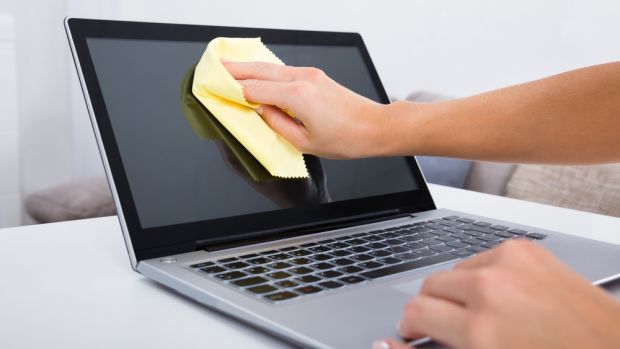
As mentioned, isopropyl alcohol can be used here at your own discretion, especially if you're looking to disinfect. Use the same microfiber cloth used on the display, or, if it's particularly dirty, dampen a new cloth. The keyboard and screen are squeaky clean, and you can now turn your attention to the touchpad and chassis to remove oily fingerprints and smudges.

If your laptop has a fresh oleophobic coating, you'll likely want to stay away from anything more harsh than marketed laptop screen cleaner. It is undeniably an effective way to clean and disinfect a device - which, again, is especially important with the threat of coronavirus - but I must offer a warning due to the ongoing argument. A best practice if you do want to test it out is to dilute 70% isopropyl alcohol at a 1:1 ratio with water (preferably distilled to prevent stains) before adding it to a microfiber cloth. I've been using disposable alcohol wipes on my laptops (screen, keys, and body) for years and have never had any issues, but there are people who claim alcohol has damaged their laptop.

Isopropyl alcohol is less harsh, but it still has people divided. Don't really care because it's an old beater that likely has the finish worn off anyway? Go ahead and use your favorite disinfectant.Īvoid harsh cleaners when wiping down your laptop, especially if an oleophobic finish is involved. Products like Windex or Lysol are common and might seem like a good idea, but they're relatively harsh and can damage the display or finish on your laptop, especially if an oleophobic coating is involved. You don't want to do any permanent damage in the name of hygiene. Source: Windows Central (Image credit: Source: Windows Central)īefore we go too deep, it's good to know where to draw the line when cleaning and disinfecting your laptop.


 0 kommentar(er)
0 kommentar(er)
